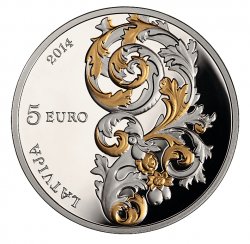
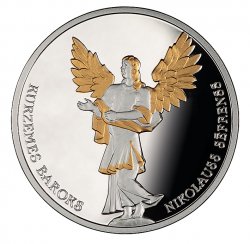
Obverse
The obverse features an acanthus leaf design from the altar of the Lestene Church. The semi-circled inscription of the year 2014 occupies the upper part of the obverse on the left from the design, the inscription 5 EURO is in the centre, and the semi-circled inscription LATVIJA (Latvia) is placed in the lower part of the obverse.
Reverse
The angel from the altar of the Lestene Church is the central motif. The semi-circled inscriptions KURZEMES BAROKS (Baroque of Courland; on the left) and NIKOLAUSS SĒFRENSS (Nicolaus Söffrens; on the right) encompass the design in the lower part of the reverse.
Edge
Two inscriptions LATVIJAS BANKA, separated by dots.
The end of the 17th and beginning of the 18th century was a time of flourishing architecture and decorative art in Courland. Estate owners competed amongst themselves for the largest and most lavish church on their property. These desires were satisfied by the woodworking workshop of Ventspils (then Windau), which had been established to be part of Duke Jacob's great shipbuilding plans. Woodcarver Nicolaus Söffrens Sr. (?–1694) made the retable and pulpit of St. Catherine's Church in Kuldīga (Goldingen) (1660–1663), and his son Nicolaus Söffrens Jr. (1662–1710) became the most outstanding master of the Courland Baroque. The Baroque era has left a particularly rich legacy in Latvia. The 17th and 18th century churches in Courland are among the greatest treasures created in Latvia in the period of historical styles. The contemporary demand promoted the immigration of foreign artists and craftsmen and thus also flourishing of the arts.
The city of Liepāja (Libau) managed to successfully match the luxury needs of the landed gentry of Courland. In 1697, the largest Baroque altar in Latvia was built in St. Anna's Church whose retable has been included in the Latvian Cultural Canon as one of its visual art treasures.
The altar and pulpit for the Landze Lutheran Church (1701) and Ventspils Castle chapel furnishings completed by Söffrens's stepson Johann Märtens (1690–1737) were also built in Söffrens's workshop. Märtens continued the woodcarving traditions of the Ventspils school. He is the author of the furnishings of the Salgale Church (1722) as well as the pulpit and confession bench of the Kandava Church (1735–1736). The carved case of the Ugāle Church organ built by master Cornelius Rhaneus from Liepāja in 1700 was made by Michael Marquart, a Söffrens's relative, in 1697. Influenced by Söffrens's workshop was also Joachim Kreuzfeldt (1673–1721) who is considered to be the author of furnishings of the churches in Usma, Saka and Vārme as well as of parts of the Apriķi Church furnishings.
The largest Baroque ensemble in Courland (1704–1709) used to be found in the Lestene Church. The altar, pulpit, confession bench, benches for the congregation and the organ case made in the same style were the last carvings made in Söffrens's workshop. In February 1945, the church was damaged by the soviet artillery bombardments. In 1961, the Evangelical Lutheran congregation of Lestene discontinued its activities. The remnants of the demolished church were taken to the Tukums Museum in 1964, and in 1967 the curch became a grain drying kiln.
As of 1982, the partially restored fragments of the Lestene Church were on display at the Rundāle Palace Museum. Now the church is undergoing renovation, and its woodcarvings are being restored to be gradually taken back to Lestene.
The restoration of the Lestene Church and woodcarvings by Nicolaus Söffrens is one of the most important projects in protecting the cultural heritage of Latvia. The participation of each and every citizen in this project is of vital importance.
 Запись еще никто не прокомментировал. Возможно вы хотите высказаться?
Запись еще никто не прокомментировал. Возможно вы хотите высказаться?
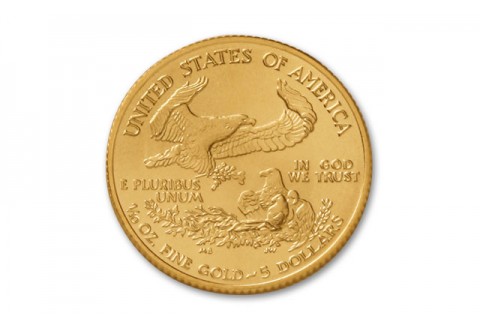
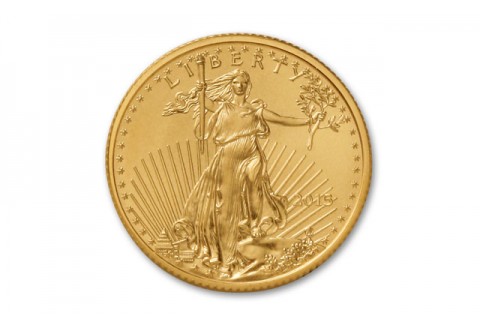
 Запись еще никто не прокомментировал. Возможно вы хотите высказаться?
Запись еще никто не прокомментировал. Возможно вы хотите высказаться?
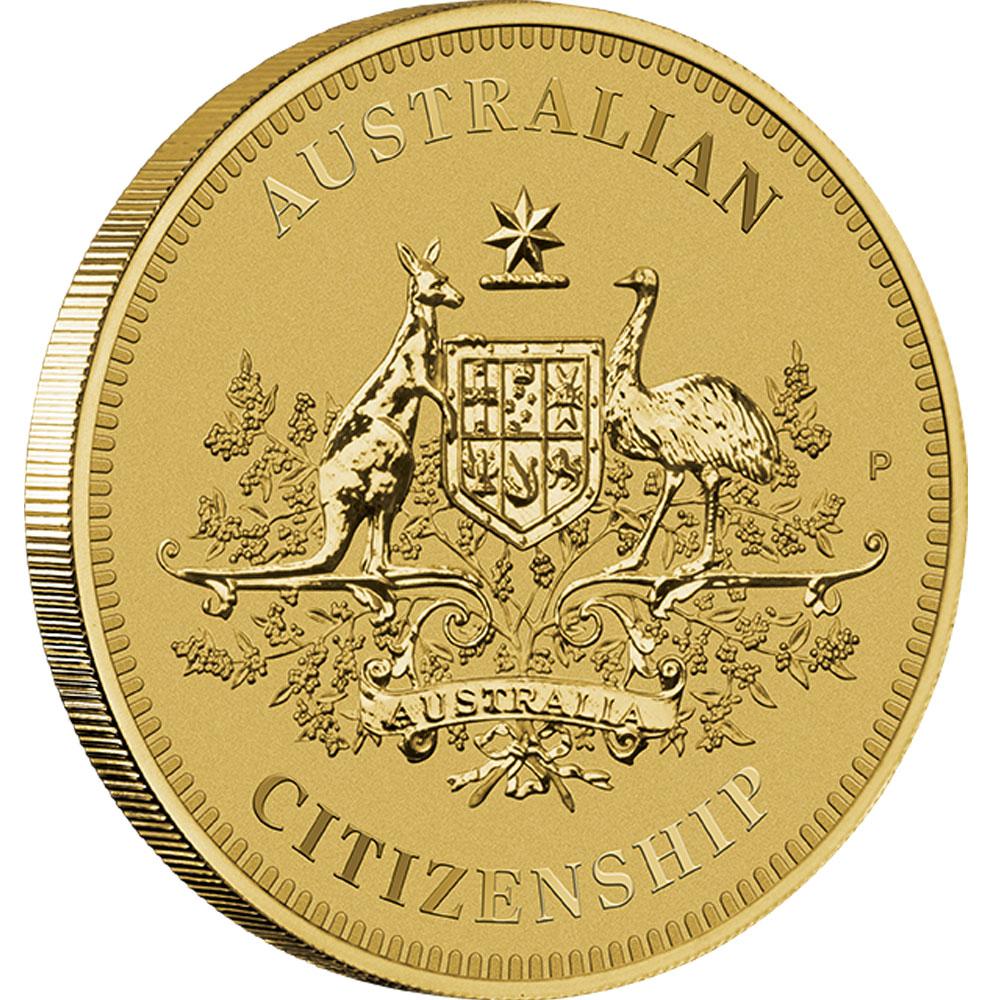

Australian citizenship symbolises our unity as a nation. It represents a commitment to Australia and its people, the values we share and our common future.
To help celebrate this joyful and important milestone, The Perth Mint has issued this uncirculated Australian Citizenship $1 Coin in Card.
This $1 coin is struck by The Perth Mint from aluminium bronze.
The coin’s reverse design depicts the Australian Commonwealth Coat of Arms, accompanied by the words AUSTRALIAN and CITIZENSHIP. The Coat of Arms consists of the badges of the six States of the Commonwealth on a shield enclosed by an ermine border signifying Australian Federation in 1901.
The design also incorporates The Perth Mint’s traditional ‘P’ mintmark.
Issued as legal tender under the Australian Currency Act 1965, the base metal coin bears the Ian Rank-Broadley effigy of Her Majesty Queen Elizabeth II on the obverse, as well as the monetary denomination and 2015 year-date.
Presented in a coloured presentation card, which incorporates a Certificate of Authenticity, and features a fold-out stand for upright display, this Australian collectable is the perfect keepsake or gift to celebrate becoming an Australian citizen.
 Запись еще никто не прокомментировал. Возможно вы хотите высказаться?
Запись еще никто не прокомментировал. Возможно вы хотите высказаться?
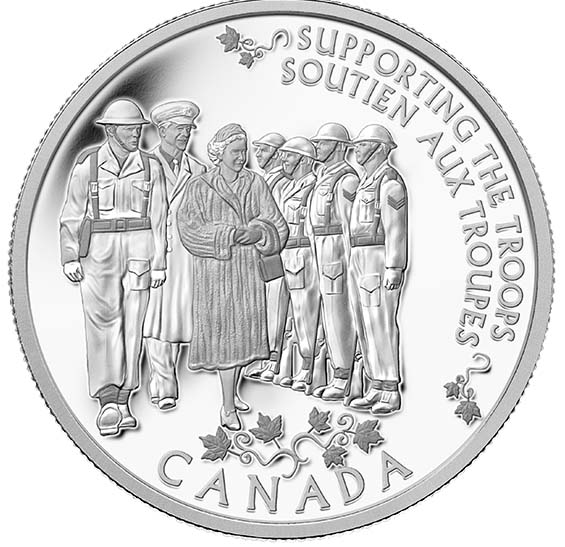

• Collect this exciting coin that was also part of a unique collection issued by England's Royal Mint to celebrate the life of the UK's longest-reigning monarch—produced in conjunction with 11 Commonwealth countries.
• An exceptional keepsake marking a significant event that shaped the remarkable reign of Her Majesty Queen Elizabeth II.
• Limited to 15,000 coins worldwide—a rare, must-have collectible for royal watchers and historians.
Design:
The reverse image presents Canadian artist Trevor Tennant's interpretation of a photograph by The Canadian Press featuring Princess Elizabeth inspecting the troops during a royal visit to Fredericton, New Brunswick, in 1951.
Packaging:
Your coin is encapsulated and presented in a Royal Canadian Mint-branded maroon clamshell with standard beauty box.
 Запись еще никто не прокомментировал. Возможно вы хотите высказаться?
Запись еще никто не прокомментировал. Возможно вы хотите высказаться?
The Mint of Poland is pleased to present a new commemorative coin from the series “Man’s Best Friends – Dogs”. This time we introduce the Pug – a small, cobby dog with wrinkled face and curled tail.
Pugs are companion dogs imported from China to Europe. Most often their smooth coats are fawn or black, but also can be apricot- or silver-fawn. Representatives of this breed are good-natured, playful and sociable. Their friendly attitude makes them an outstanding companion and family pet.
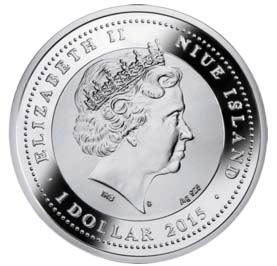
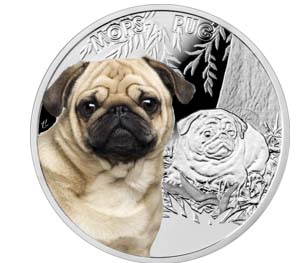
 Запись еще никто не прокомментировал. Возможно вы хотите высказаться?
Запись еще никто не прокомментировал. Возможно вы хотите высказаться?
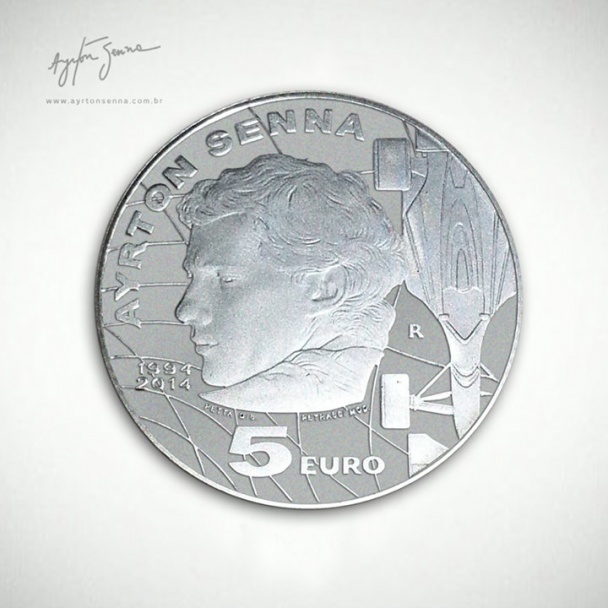
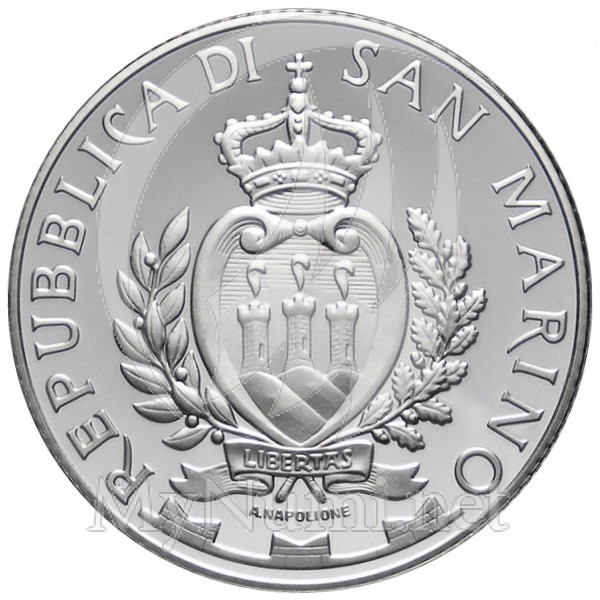
Technical Details:
5ESM14AS, 18, 5, 2014, 32, Ag 925/1000, 8.000, Proof
 Запись еще никто не прокомментировал. Возможно вы хотите высказаться?
Запись еще никто не прокомментировал. Возможно вы хотите высказаться?
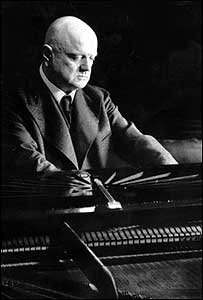
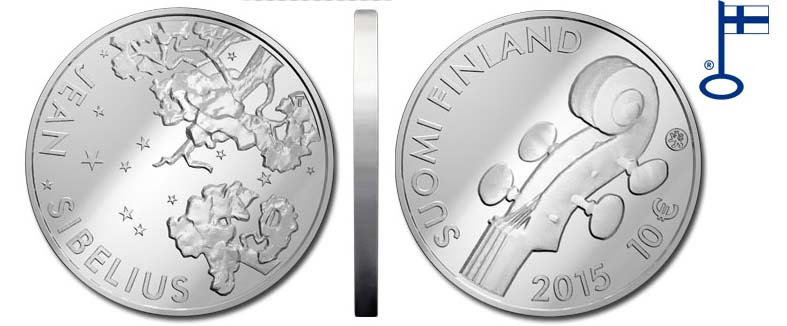
 Запись еще никто не прокомментировал. Возможно вы хотите высказаться?
Запись еще никто не прокомментировал. Возможно вы хотите высказаться?


Reverse:
In the central part of the coin – colorful image of a Scottish Fold decorated with two SWAROVSKI ELEMENTS. In the background – relief image of a cream-colored representative of the breed. Above – name of the coin in English and Polish: scottish fold/kot szkocki zwisłouchy. Along the rim – decorative elements: cat’s paw prints.
Obverse:
In the central part of the coin – effigy of Her Majesty Queen Elizabeth II. Below – inscriptions: Ag 999 (hallmark), m/w (mint mark). Along the rim – inscriptions: ELIZABETH II, NIUE ISLAND (issuer), 1 DOLLAR (face value), 2014 (year of issue).
| Face value | 1 New Zealand dollar Niue Legal Tender |
| Metal | Ag 999 |
| Size | 38.61 mm |
| Weight | 17,50 g |
| Mintage | 999 pcs |
| Issuer | Niue |
| Quality | proof |
| Decoration | digital printing, SWAROVSKI ELEMENTS |
| Date of issue | December 2014 |
 Запись еще никто не прокомментировал. Возможно вы хотите высказаться?
Запись еще никто не прокомментировал. Возможно вы хотите высказаться?

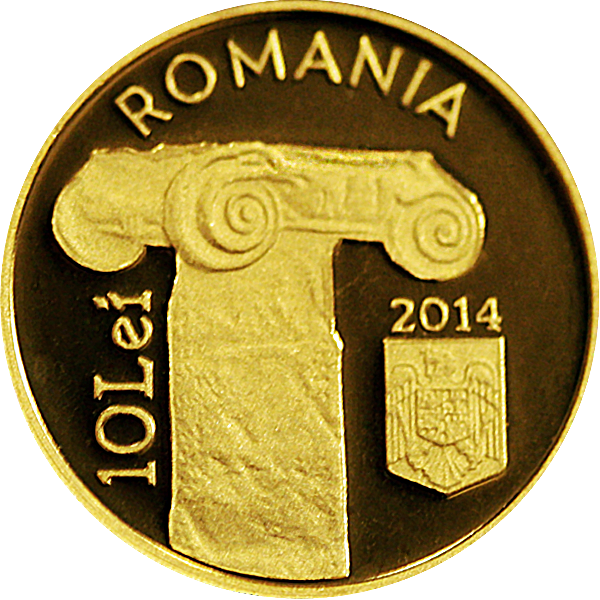
First documented currency on Romanian territory were silver drachmas (-8 g weight) issued by the Greek Istra about 480 BC.
Istria - the name of the peninsula in the Adriatic Sea. In the Bronze Age on the peninsula of Istria settle, which was the center of Nesaktsy. Istria engaged in piracy and trade, which reached the Balkans in the East and South of Italy in the west. In the III. BC. e. Peninsula begin to colonize the Greeks, based, in particular, on the site of the modern city of Pula. Finally Istria were conquered by Rome in 177 BC. e ..
After the fall of the Western Roman Empire, the region was captured and ruined by the Goths and Lombards in 789, was annexed to the Frankish kingdom.
Gold coin minted in Istria
Gold coin minted in Istria
The obverse of the coin engraved central column, found during excavations in Istria. Top semicircular inscription Romania (country of issue), right 10 Lei (coin value), the right of the column coat of arms of Romania, over it - 2014 (year of issue).
On the reverse - the image of one of the ancient coins of Romania. Top circular inscription Monede Din Aur Batute La Histria (gold coins minted in Istria).
 Запись еще никто не прокомментировал. Возможно вы хотите высказаться?
Запись еще никто не прокомментировал. Возможно вы хотите высказаться?

Silver Coin Beaver
Canadian beaver (Castor canadensis) - semi-aquatic mammals rodents; one of the two modern representatives of the family of beavers (along with the Eurasian beaver). Beavers - the second largest rodents after capybaras.
Biologically similar to the Eurasian and has long been considered a subspecies of it. However, in its chromosome karyotype 40, not 48 as in the Eurasian beaver and they can not hybridize.
In contrast to the Eurasian beaver his torso less elongated, broad chest, short head with larger dark auricles and closely spaced protruding eyes. The tail is wider (length of 20-25 cm, width 13-15 cm) oval with a slightly pointed tips, covered with black horny scutes. The length of its body 90-117 cm; weight is 32 kilograms. Colouring reddish or blackish-brown. Cutters disproportionately high - they beaver gnaws hardwood. Upper teeth, at least 20-25 mm long and 5 mm wide. Ganging ear holes and nostrils, transparent membrane on the eyes are an adaptation to a semi-aquatic lifestyle. At the base of the tail and the males and females are larger paired glands that produce fragrant secret.
Silver Coin Beaver
The obverse of the coin features a portrait of Queen Elizabeth II.
On the reverse - the beaver, is immersed in water. From its tail fly spray. In the background mountain landscape of Canada. Under the image of a beaver in the three lines of inscription: Canada (country of issue), 50 dollars (coin value), 2015 (year of issue).
The coin is made of silver 9999 samples (proof), weight 15.87 g, diameter 34 mm, with a circulation of 100 thousand copies.
 Запись еще никто не прокомментировал. Возможно вы хотите высказаться?
Запись еще никто не прокомментировал. Возможно вы хотите высказаться?